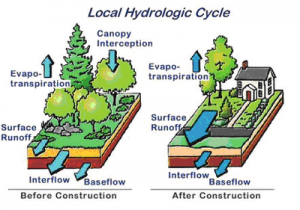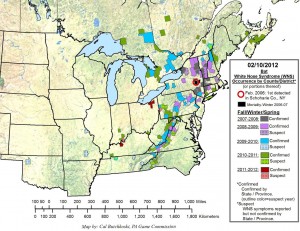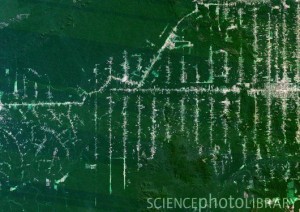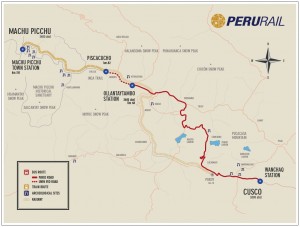
Since its discovery in the early 1900’s the ancient Inca site of Machu Picchu has been studied extensively by archaeologists and eventually has become one of Peru’ popular tourist destinations bringing in thousands of tourists from around the world each year. While the tourism industry surrounding Machu Picchu in Peru has been very successful and helped local economies, the environmental impacts of tourism in the area are unmistakable. In 2008 Machu Picchu was listed among the top 100 most endangered sites due to environmental degradation. One of the sources of this environmental degradation has been the construction of a railway to bring tourists and their luggage into Machu Picchu. This has increased the number of people walking around the site and has led to serious environmental degradation of the area. This site compares some of the costs and benefits of the railway and the map above shows the path that the railway takes. Do you think that the construction of this railroad was a worthwhile Endeavour? Why or why not?
Author Archives: Brian C
Impacts of Development on Watershed Areas
This website, created by the Oregon Environmental Council, is designed to educate people about the impacts that development can have on local watersheds. It illustrates the impact that even a small, one family home can have on a local ecosystem. The construction of a single family home can create impervious surfaces on anywhere from 25 to 60% of the property. The amount of impervious surface needed to cause a significant amount of damage to an ecosystem is often less than 10%. This figure is only for a single family home. When we talk about the impact of urban developments that can have close to 100% impervious surface cover the damage to the ecosystem is unavoidable. It is important to realize the widespread effects that development can have on local watersheds and the surrounding ecosystems. Take a look at this website to look at some of the other ways that ecosystems can be damaged by urban development.
The Spread of White Nose Fungus in Bats
Over the past several years a new type of disease has been decimating bat colonies in the northeastern part of the United States. Researchers have found entire colonies of brown bats dead in their caves with the telltale white fungus on their noses that is characteristic of of this disease. This disease, which has become known as White nose syndrome is estimated to have wiped out up to 90% of Connecticut’s brown bat population. What is more concerning is that it is spreading. This map illustrates the spread of White nose syndrome over the past few years. It i interesting to note that the disease seems to be spreading along the physical barrier of the Appellation mountains. To learn more about White nose syndrome visit the US Fish and wildlife service website.
Wildlands CPR
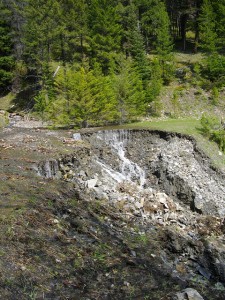 Wildlands CPR is an organization that focuses on reducing and preventing the harmful impacts that roads and railways have on the environment. Their website provides background information about what these harmful effects are as well as the ways in which Wildlands CPR is working to counteract those effects.
Wildlands CPR is an organization that focuses on reducing and preventing the harmful impacts that roads and railways have on the environment. Their website provides background information about what these harmful effects are as well as the ways in which Wildlands CPR is working to counteract those effects.
Wildlands CPR’s website is broken down in a way that is easy to understand. Information regarding current projects is available as soon as the website is opened. Each project has information about what goals have been set, what has been accomplished so far, as well as background information about why each project is important. Some of the projects listed include reducing the impact that road development has on watershed areas and working with parks to reduce the use of off road vehicles in the parks to protect plant and animal life.
While the website is very large and contains a large amount of information, its organization allows the user to easily maneuver through the information available. This makes the website just the right size no matter how much information is available. Because of the wealth of information available on this site it is able to widen its target audience to include both experts and people looking to learn the basics of what the impacts of road and rail on the environment are.
Overall I believe this is a very useful website that is constructed in a way that allows many people to use it for a variety of different reasons.
Deforestion due to Roads in Brazil
This Landsat satellite image shows the deforestation that has taken place in the Eastern Part of Brazil. The picture illustrates the fishbone pattern that comes as a result of developing new roads. This fishbone pattern occurs when new roads that stem off of one main road are built. This effectively divides Brazil’s rainforest into smaller and smaller pieces.

